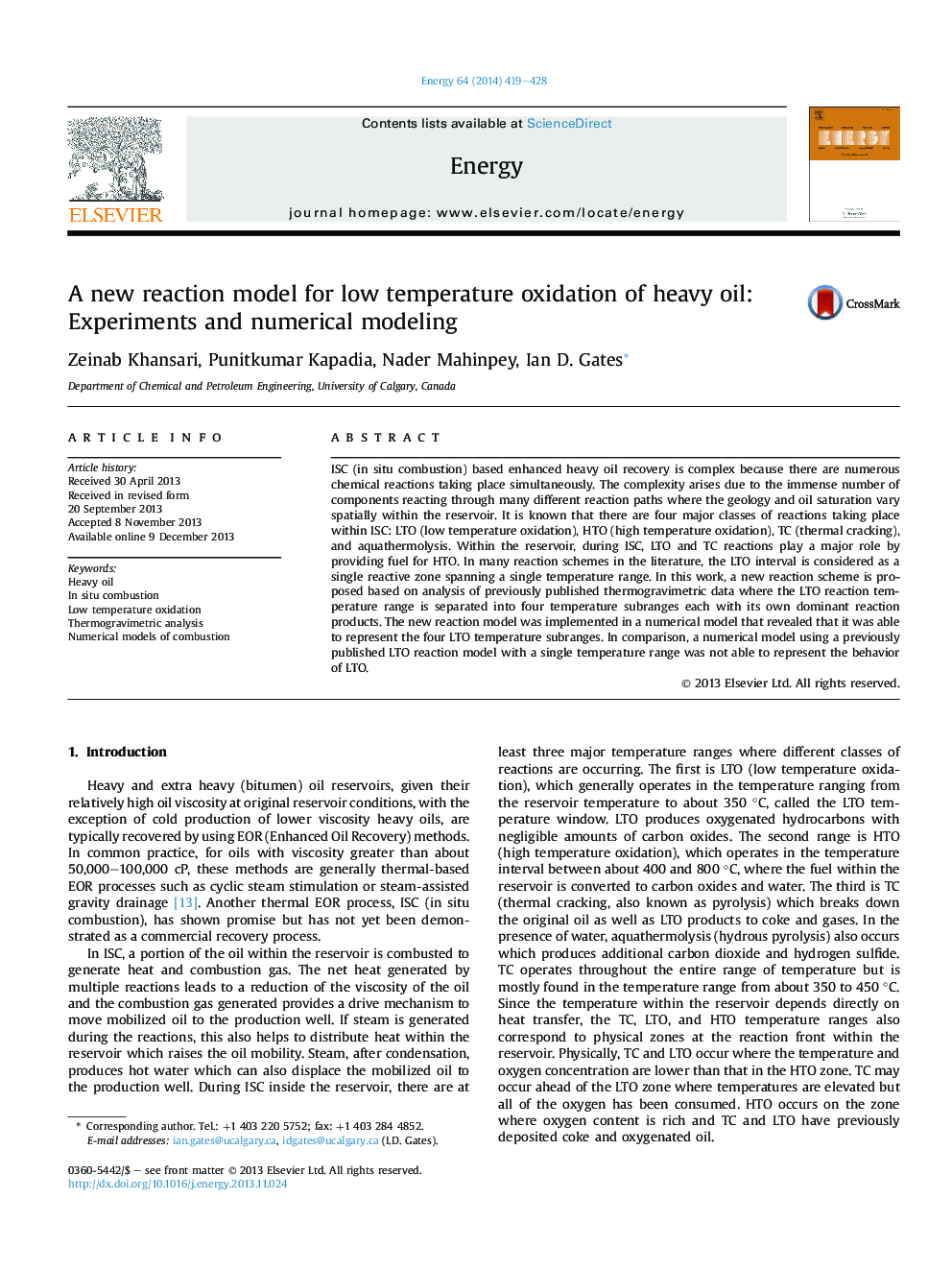| Article ID | Journal | Published Year | Pages | File Type |
|---|---|---|---|---|
| 8078744 | Energy | 2014 | 10 Pages |
Abstract
ISC (in situ combustion) based enhanced heavy oil recovery is complex because there are numerous chemical reactions taking place simultaneously. The complexity arises due to the immense number of components reacting through many different reaction paths where the geology and oil saturation vary spatially within the reservoir. It is known that there are four major classes of reactions taking place within ISC: LTO (low temperature oxidation), HTO (high temperature oxidation), TC (thermal cracking), and aquathermolysis. Within the reservoir, during ISC, LTO and TC reactions play a major role by providing fuel for HTO. In many reaction schemes in the literature, the LTO interval is considered as a single reactive zone spanning a single temperature range. In this work, a new reaction scheme is proposed based on analysis of previously published thermogravimetric data where the LTO reaction temperature range is separated into four temperature subranges each with its own dominant reaction products. The new reaction model was implemented in a numerical model that revealed that it was able to represent the four LTO temperature subranges. In comparison, a numerical model using a previously published LTO reaction model with a single temperature range was not able to represent the behavior of LTO.
Related Topics
Physical Sciences and Engineering
Energy
Energy (General)
Authors
Zeinab Khansari, Punitkumar Kapadia, Nader Mahinpey, Ian D. Gates,
